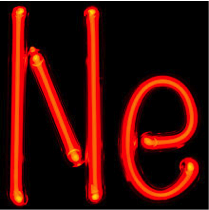-
WHAT IS NASA PHYSICS?
-
MODULES
-
Forces and Motion
-
Conservation of Momentum & Energy
-
Temperature and Heat
-
Fluids
-
Optics
-
Electromagnetic Spectrum
-
Modern Physics
-
Anticipation Guide 7
-
Intro to Modern Physics
-
Blackbody Radiation
-
The Ultraviolet Catastrophe
-
The Photoelectric Effect
-
Bohr's Atom
-
Spectra
-
Radioactive Decay
-
Special Relativity (SR)
-
Simultaneity
-
Distance and Time
-
General Relativity
-
May the Forces be with You
-
Modern Physics Notebook
-
Assessment Problems 7
-
-
Useful Things
-
-
SITE MAP
Modern Physics
-
Anticipation Guide
-
Intro to Modern Physics
-
Blackbody Radiation
-
The Ultraviolet Catastrophe
-
The Photoelectric Effect
-
Bohr's Atom
-
Spectra
-
Radioactive Decay
-
Special Relativity (SR)
-
Simultaneity
-
Distance and Time
-
General Relativity
-
May the Forces be with You
-
Notebook
-
Assessment Problems
Bohr was a nearly unbeatable ping-pong player and he and his students would bat around theories about atoms and electrons while smashing the ball across the net.
Two atoms were walking across a road when one of them said, "I think I lost an electron!" "Really!" the other replied, "Are you sure?" "Yes, I'm absolutely positive."
Bohr's Atom
How does all this relate to the atom? While the photoelectric effect and blackbody radiation were being figured out, the structure of atoms was still an active research topic. In 1913, Niels Bohr, a physicist from Denmark, modified the Rutherford model to be consistent with observations. Bohr did this by asserting that electrons could not travel in any orbit but only specific ones, and that electrons jumped instantaneously from one orbit (or energy level) to another. Bohr also stated that the orbiting electron doesn’t emit energy while in its orbit but only emits energy (as a quanta or photon of light) when it jumps to a lower orbit. Each orbit corresponds to a particular energy level so the energy levels of an atom are not continuous. The highest energy levels are for the orbits closest to the nucleus.
 Let’s look more closely at the diagram of Bohr’s atom showing the orbits of electrons around an atom’s nucleus. This diagram is only 2-dimensional but electrons actually orbit a nucleus in 3-dimensional space so think of an atom as a sphere, with a microscopic nucleus at the center and electrons whirling around at different distances and in different planes.
Let’s look more closely at the diagram of Bohr’s atom showing the orbits of electrons around an atom’s nucleus. This diagram is only 2-dimensional but electrons actually orbit a nucleus in 3-dimensional space so think of an atom as a sphere, with a microscopic nucleus at the center and electrons whirling around at different distances and in different planes.
The diagram shows three orbits for electrons. The lowest orbit, with the electron closest to the nucleus, is the most tightly bound location and the atom is said to in the ground state. Any electron in a higher orbit is in an unstable situation and the atom is said to be excited. (I get excited myself just thinking about these atoms and jumping electrons.) If an electron is at level 3 and falls to level 2 it loses a specific energy as a photon of light, the red squiggly arrow, with the loss of energy (E) equaling:
Energy Change = Planck’s Constant X Frequency
E = hf
where h = 6.63 x 10-34 m2 kg/s, and f is wavelength. This should look familiar because it is the same formula that Planck derived to explain blackbody radiation (Eqn 7.2). We will learn more of the German physicist Max Planck below.
 Neon light display of the chemical abbreviation for the element neon; Image from Wikipedia.The electron can also jump directly from level 3 to level 1. In that case the E would be a higher energy than the 3 to 2 jump so the wavelength of the emitted photon would also be higher. In actuality there are hundreds of different orbits for most atoms. We now understand that light of different wavelengths comes from different jumps!
Neon light display of the chemical abbreviation for the element neon; Image from Wikipedia.The electron can also jump directly from level 3 to level 1. In that case the E would be a higher energy than the 3 to 2 jump so the wavelength of the emitted photon would also be higher. In actuality there are hundreds of different orbits for most atoms. We now understand that light of different wavelengths comes from different jumps!
If all the electrons jump down to the lowest state how do they get back to a higher level – how do they get excited again? More energy must be added to the atom by one of three methods. A surefire way to pump in more energy is to heat the gas so that electrons have more energy and can jump up out of the ground state to a higher level. A second way to add energy is by chemical reactions such as burning. A third way to excite atoms is to add more of them, moving at high speed. This is done by passing an electric current through a gas so that electrons and atoms collide with atoms already in the gas, causing them to absorb energy and be excited again. This is how fluorescent lights work, with mercury vapor being the gas that is excited by the flow of electricity. Neon lights work similarly, with neon and other gases being used to glow in different colors. If you ever dreamed of being a Hollywood star and seeing your name in neon lights you were really just excited about electron jumps.
© 2013 by Wheeling Jesuit University/Center for Educational Technologies®. 316 Washington Ave., Wheeling, WV 26003-6243. All rights reserved. Privacy Policy and Terms of Use.

